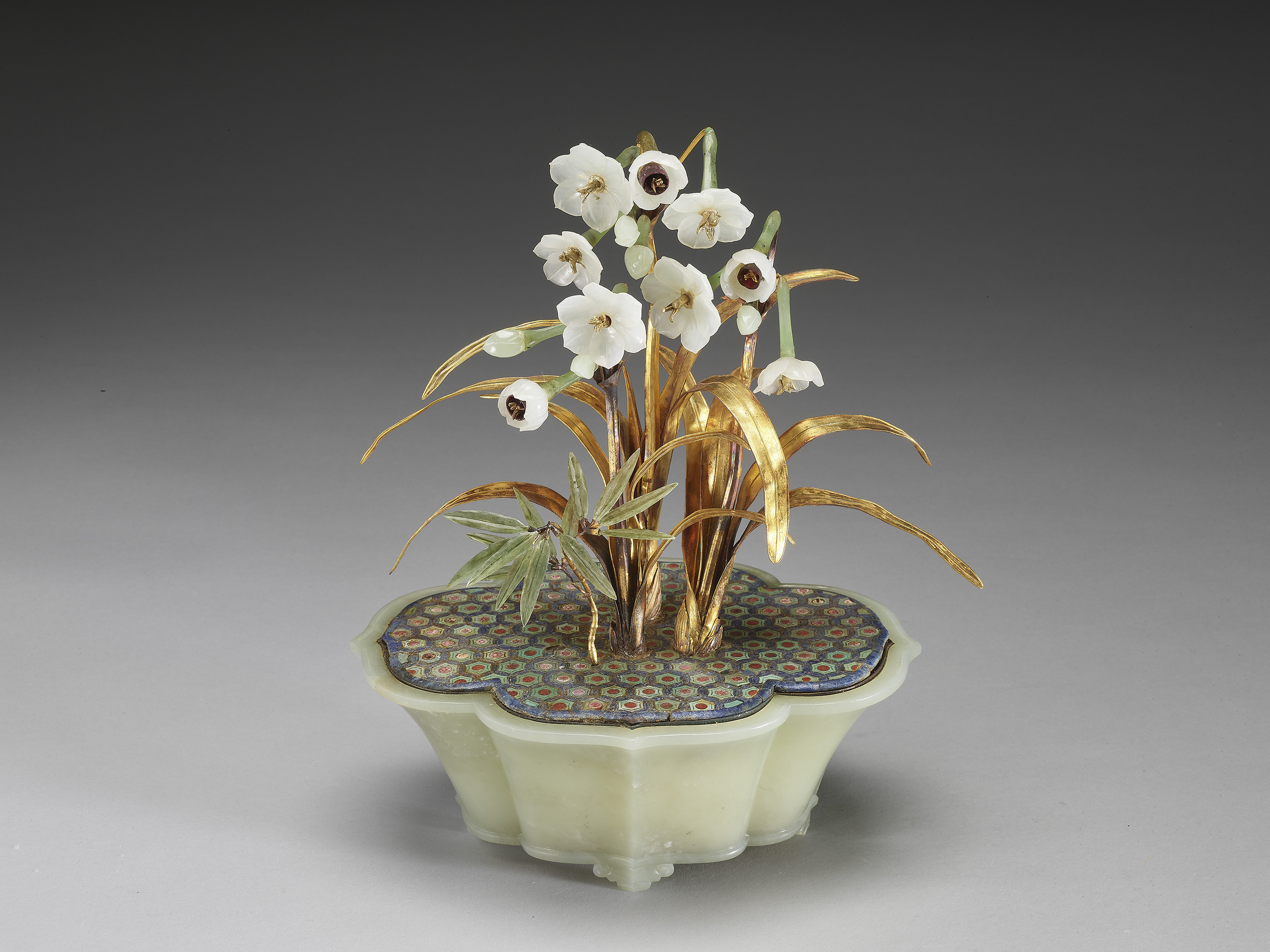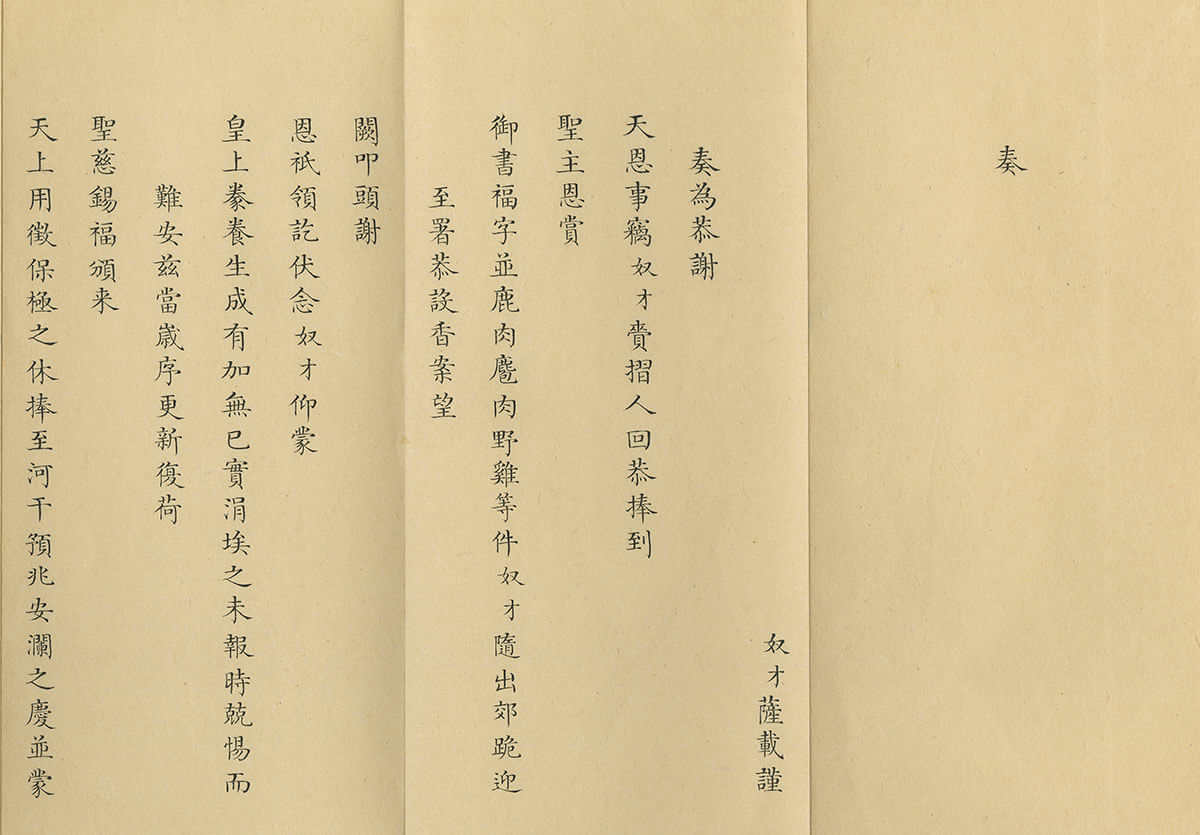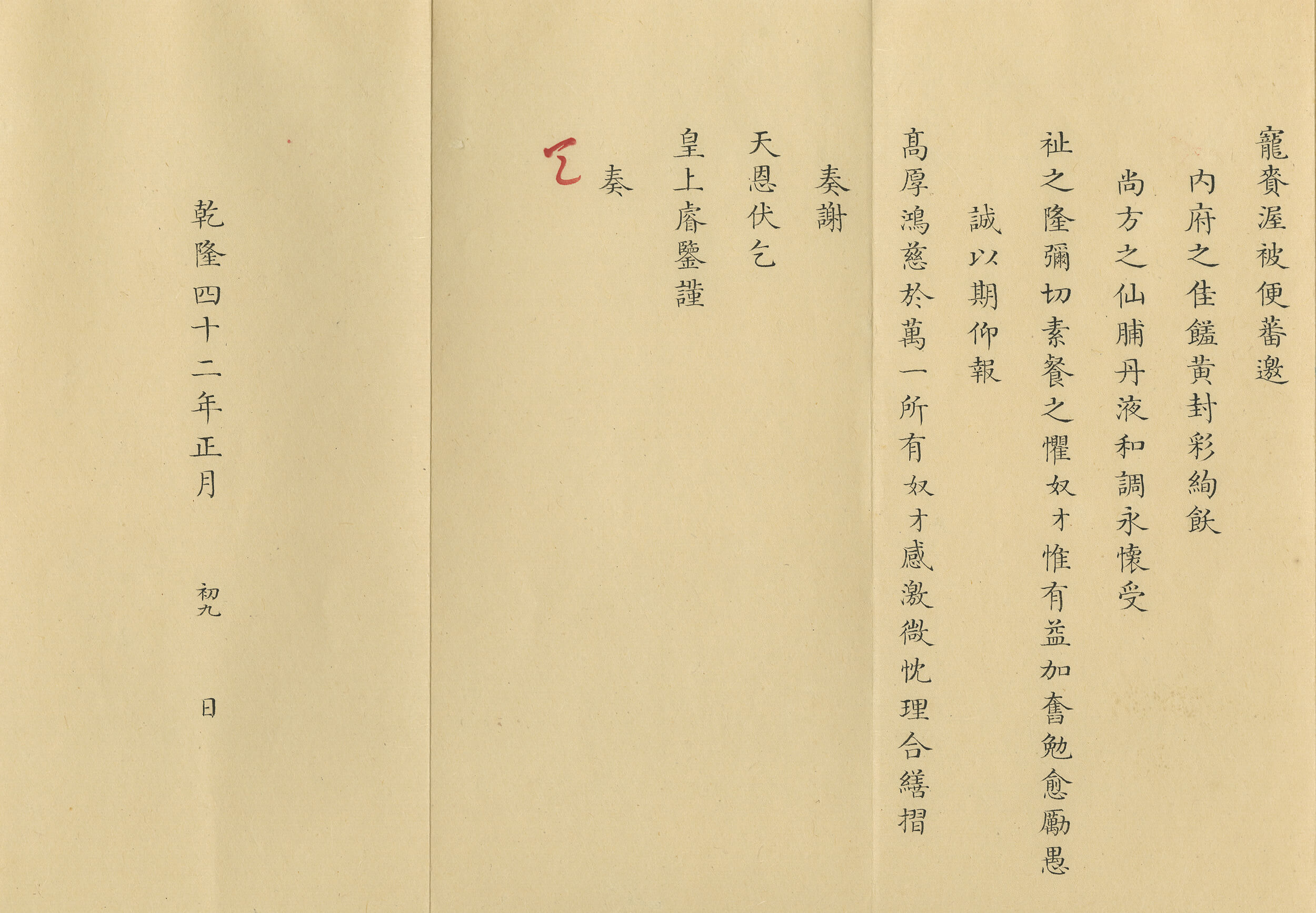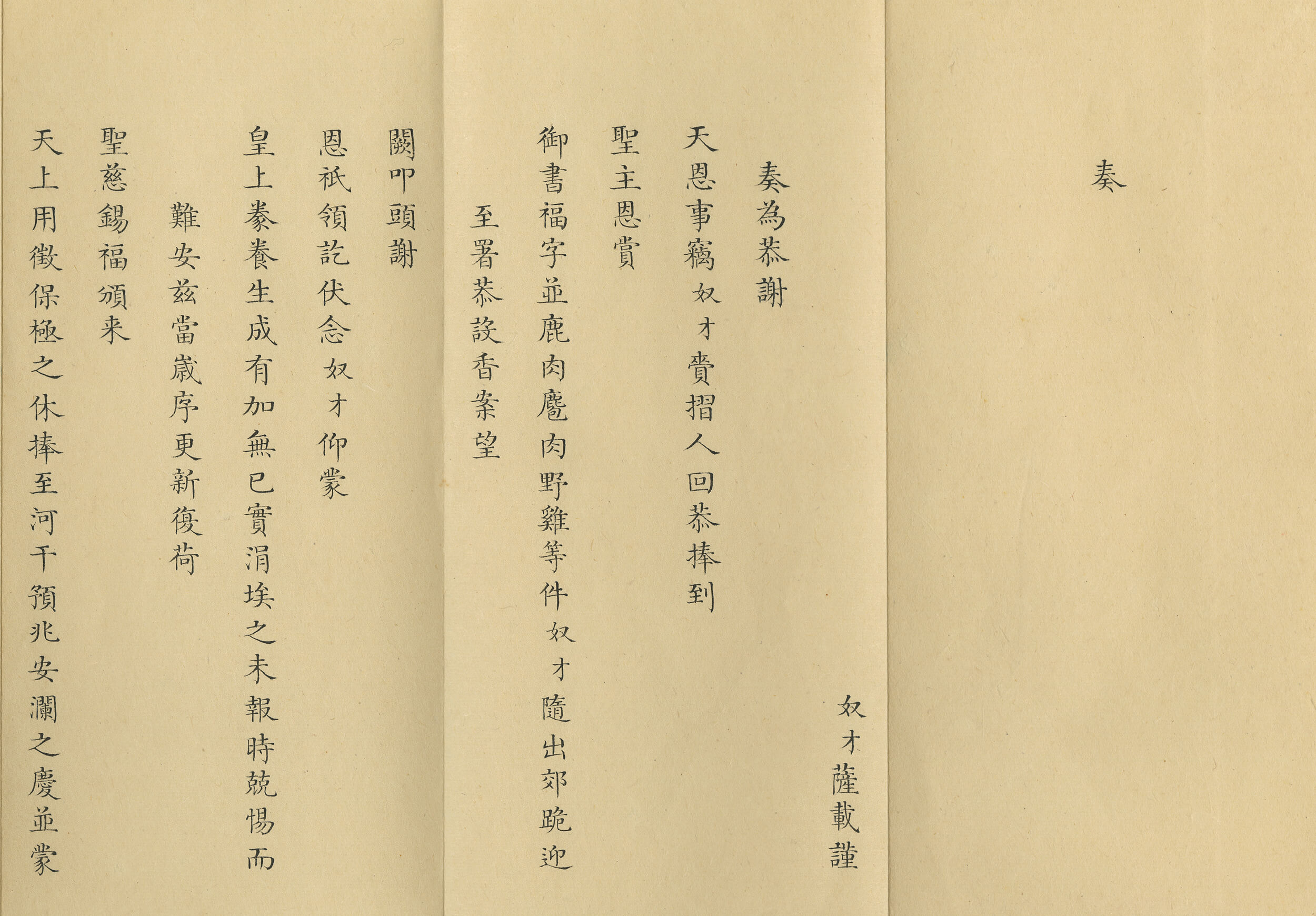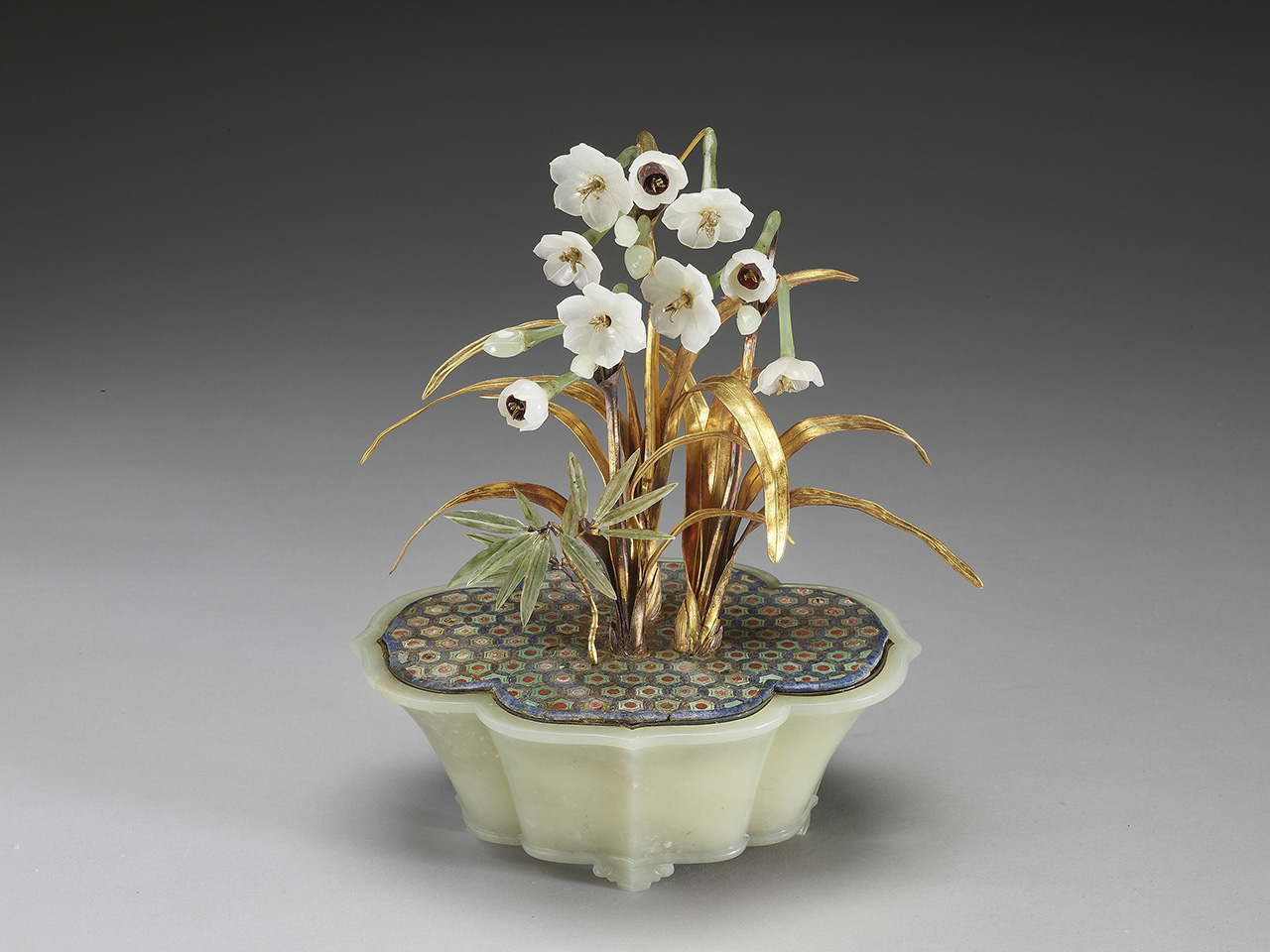Seasonal Rhythms
Traditional time was structured by celestial movements, ritual ceremonies, and the agricultural calendar. The Qing dynasty's sense of time merged Han Chinese customs with Manchu-Mongolian tradition, evolving into diverse forms that followed seasonal and natural changes. Through spring awakening, summer growth, autumnal harvest, and winter retreat, this cycle reveals the story of a year in the Qing dynasty.
Winter Retreat
- Palace memorial on receiving imperial gifts
- Presented by Sazai
- 1777, Qing dynasty
For the Manchus, deer were prized game and their meat was used in ceremonies, because the word for deer (lu) sounded like the word for prosperity. After the Qing conquest of China, it became a status symbol to receive imperial venison. Receiving both the emperor's "Fu" calligraphy and venison represented the dual blessings of fortune and prosperity.
From Jiaqing's reign onward, emperors often added "longevity" (shou) to "Fu", sometimes even including auspicious characters like "dragon", "tiger", and "joy".
- Jeweled narcissus in jade vessel
- Qing dynasty (1644–1911)
The narcissus flower marks the third pentad of Lesser Cold in the "Twenty-Four Floral Messengers of Wind" system. This traditional Chinese calendrical framework, spanning from Lesser Cold to Grain Rain, paired specific blooms with each of the twenty-four seasonal pentads.
This work exemplifies the New Year's tradition of "pure offerings". Two narcissus clusters emerge from a celadon jade vessel, their white jade petals adorned with gilded stamens and foliage. A bamboo branch provides visual counterpoint, while lapis lazuli and turquoise create an intricate inlaid ground. The composition achieves a noble elegance.
